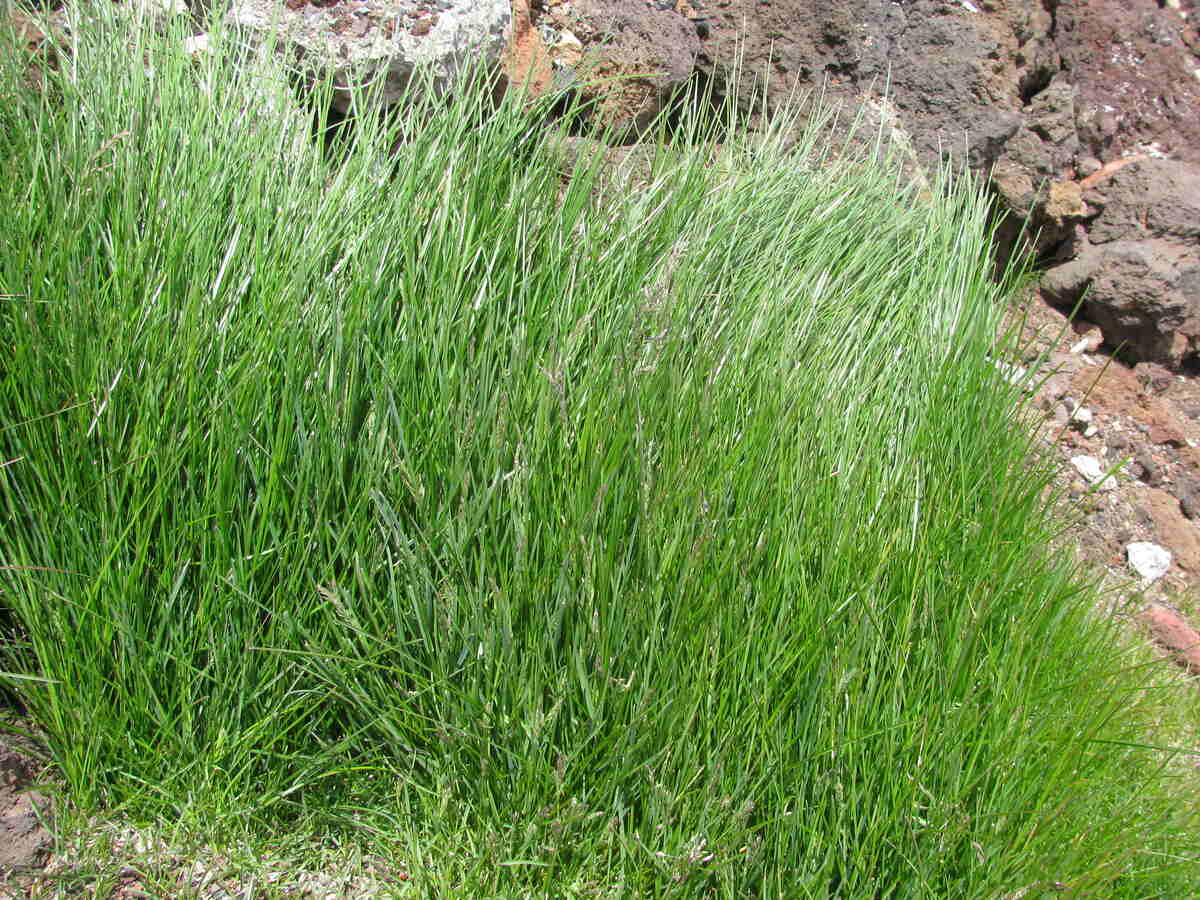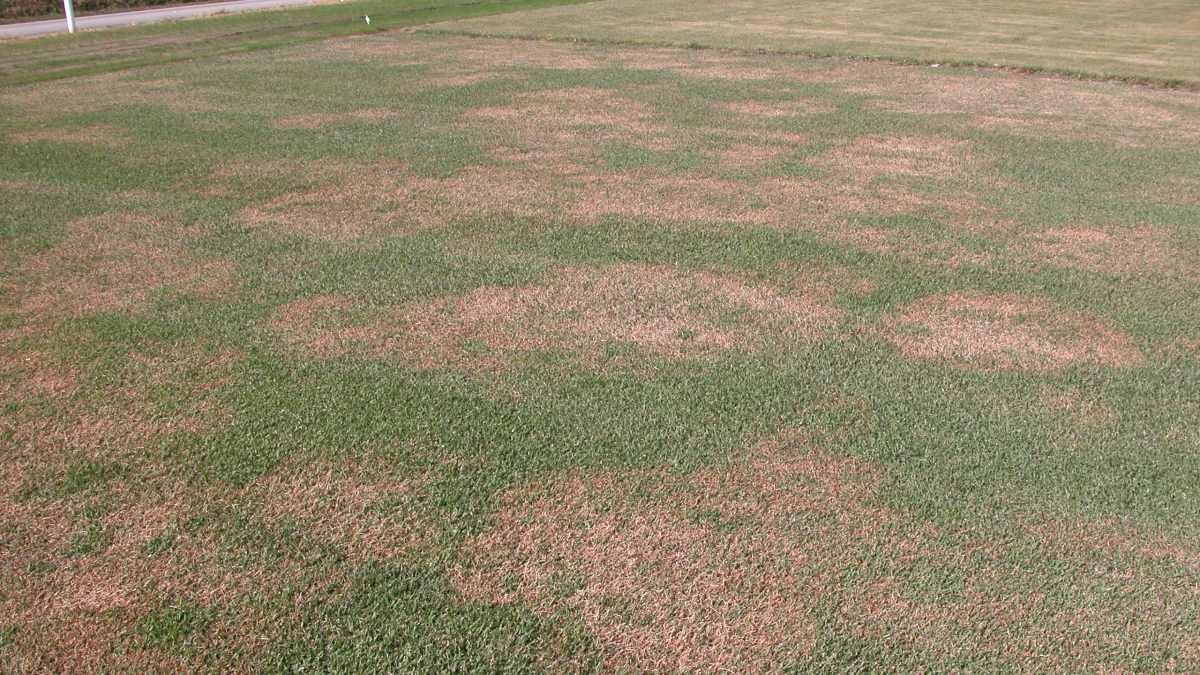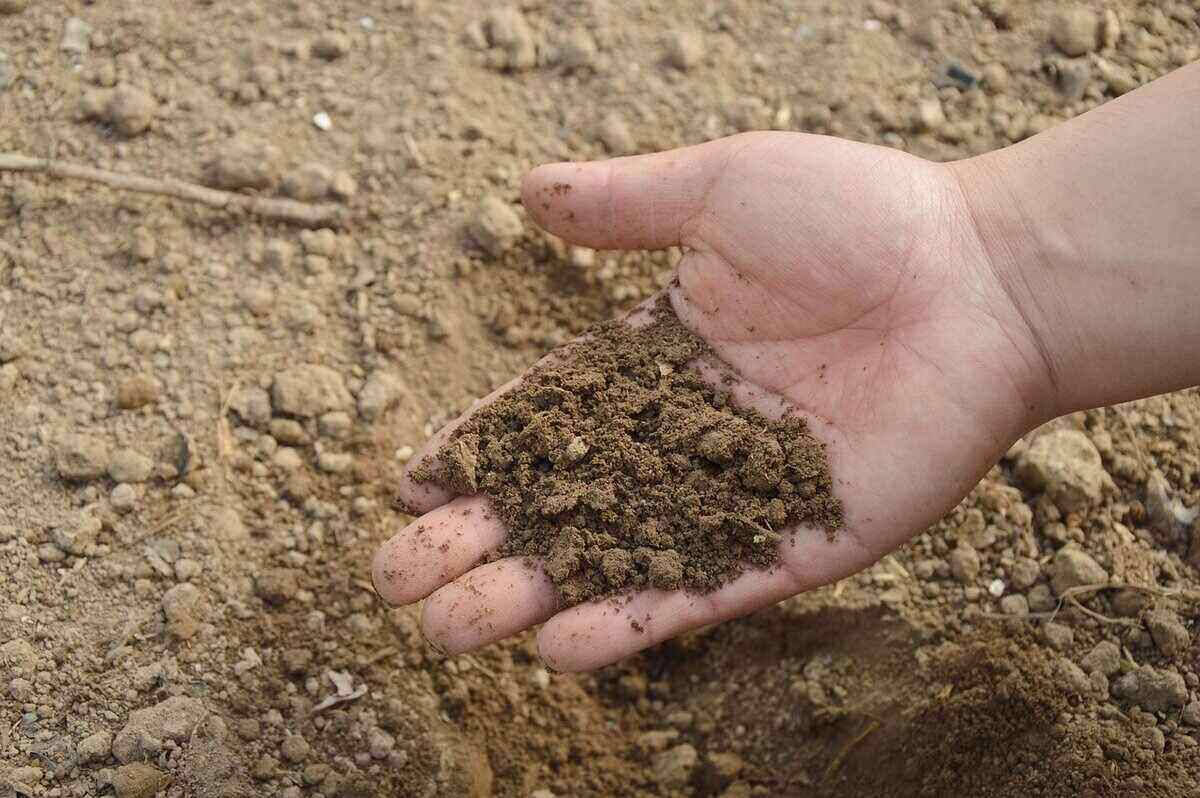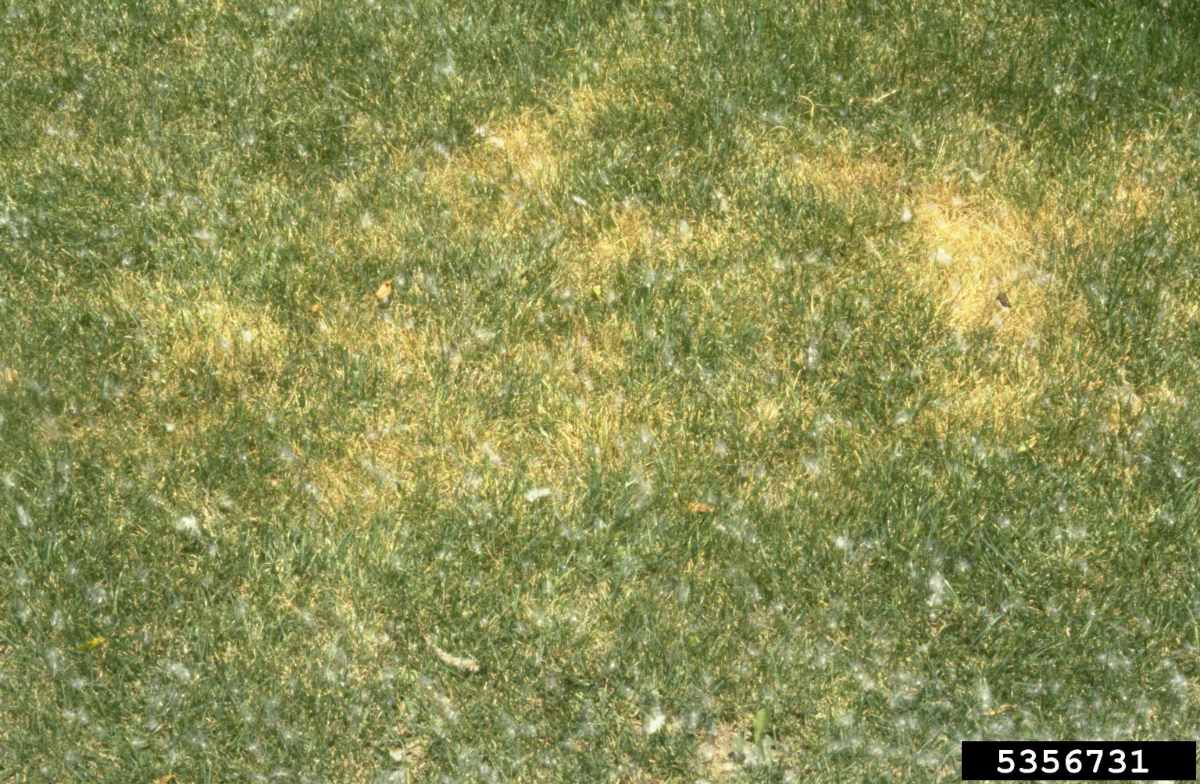
Wet conditions attract leaf spot and melting out, two troublesome lawn diseases that can kill large portions of turfgrass, including both cool-season grasses like Kentucky bluegrass and warm-season grasses like Bermuda.
If your lawn is infected with leaf spot or melting out, learn from experts how to get rid of it. Implementing proper mowing, watering, fertilizing, and soil management methods are all effective ways to get rid of these diseases.
| Project Difficulty: Easy Estimated Time to Complete: It takes several weeks to get rid of leaf spot and melting out, with repeated fungicide applications every 1-2 weeks. Project Cost: It costs $5 to $8 per 1,000 square feet for a fungicide treatment. For overall lawn care maintenance costs, expect to pay $100 to $410 per month. |
Proper Watering
Proper irrigation prevents water from pooling in your yard and reduces the chances of leaf spot and melting out taking over your yard. Here are some good irrigation practices to use when you water your yard:
- Water grass deeply before 9 a.m., particularly in the summer months when leaf spot fungus runs rampant. Watering in the morning allows your lawn time to soak up all the hydration before the afternoon sun rises. Avoid watering in the evenings, as this will encourage damp conditions that lead to disease.
- Avoid overwatering your lawn. Water deeply and infrequently, based on the needs of your grass type to ensure you’re nourishing the whole root system. Watering too often and for short periods encourages a shallow and weak root system.
See Related:
- How Long Should I Water My Lawn?
- How Often Should I Water My Lawn?
- When is the Best Time to Water Your Lawn in Hot Weather?
Proper Mowing
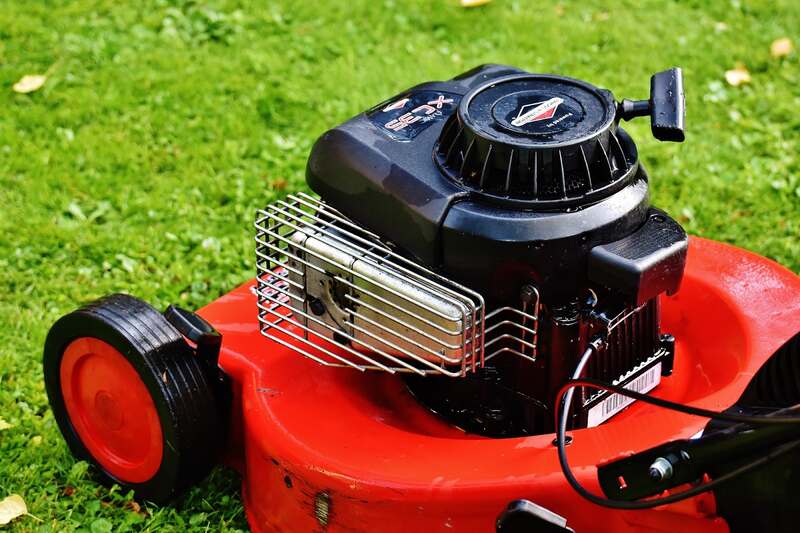
If you’re struggling with leaf spot and melting out, mow your grass at the recommended height for your grass type, but no lower than 2 inches. Mowing lower than 2 inches may increase your turf’s vulnerability to the fungi.
| Recommended Mowing Height by Grass Type | ||
| Grass species | Recommended mow height (inches) | Mow when it reaches this height (inches) |
| Bermudagrass (seeded) | 1-2 | 1.5-3 |
| Centipedegrass | 1-2 | 1.5-3 |
| Fine fescues | 1-3 | 1.5-4.5 |
| Kentucky bluegrass | 2-3 | 3-4.5 |
| Perennial ryegrass | 1-3 | 1.5-4.5 |
| Tall fescue | 2-4 | 3-6 |
| Zoysiagrass | 1-2.5 | 1.5-3.75 |
To prevent the spread of leaf spot, mow the diseased areas of the lawn last. When you mow infected areas, always bag the grass clippings and sanitize your lawn mower after you finish.

Follow the one-third mowing rule, the rule that mowers should never trim off more than one-third of grass blades’ total height in a single mowing session. Lawn scalping stresses the grass, leaving it susceptible to lawn diseases like leaf spot and melting out.
| Struggling to find time to mow your lawn? Try hiring a LawnStarter pro and avoid the hassle of making time for DIY lawn care. Our customers pay an average of $48 per mowing service. |
Improve Air Circulation
To fix compacted soil, aerate your lawn to give grass roots access to nutrients and oxygen in the soil. It also makes it easier for water to go deep into the soil, which prevents moisture from sitting on the lawn for extended durations. This promotes robust, healthy grass, a natural deterrent against lawn diseases.
See Related:
Fertilizer Adjustment
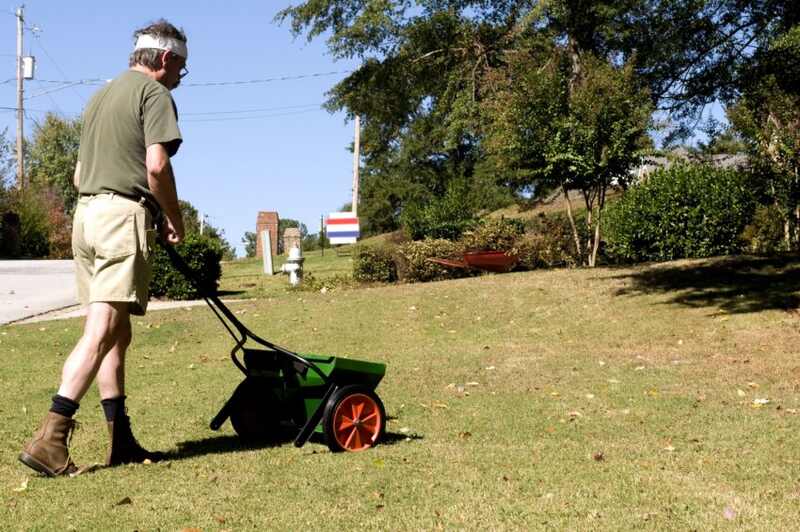
Apply fertilizer in moderate amounts. Excessive nitrogen in your lawn causes more harm than good. Never apply more than 1 pound of fertilizer per 1,000 square feet during a single application. Also, instead of applying nitrogen fertilizer in the spring, change your fertilizing schedule so you do a fall application instead.
Avoiding overfertilization won’t only protect your lawn from these troublesome diseases –– it’s better for your yard, your wallet, and for the environment long-term.
See Related:
Soil Management
Too little or too much nitrogen may encourage leaf spot and melting out diseases in your lawn. A lack of potassium can also encourage these diseases.
Test your soil to determine what nutrients it may lack, then add soil amendments to your soil as needed. This will promote healthy grass growth and make your grass resistant to contracting leaf spot or melting out disease.
Fungicides
There are several fungicides available that provide some control over leaf spot and melting-out, or at least prevent it from spreading. But proper timing is key to getting an effective result.
Watch out for leaf spot/melting out when the weather is humid, with temperatures of 70 to 90 F for cool-season grasses and 60 to 70 F for warm-season grasses.
- For leaf spot, the early stage of these diseases, apply fungicide preventatively or in the early stages of development.
According to Phillip Lujan, Extension plant pathologist with New Mexico State University, “Fungicides are much more effective during the leaf spot stage, which is the initial infection process.” - For melting out, a sign that the disease has advanced to the base of the plant, apply fungicide before rotting begins.
Lujan says, “Once it moves to the melting out stage, …then you are treating to prevent spread and not necessarily curing the areas that are infected.”
But which fungicides should you choose? “Most fungicides labeled for lawn diseases can control leaf spot and melting-out,” says Yonghao Li, plant pathologist at The Connecticut Agricultural Experiment Station.
These fungicide active ingredients are commonly used on leaf spot and melting out disease:
- Iprodione
- Chlorothalonil
- Mancozeb
- Fludioxonil
- Azoxystrobin
- Penthiopyrad
Pro Tip: Even in the early stages, treating with fungicides may not “cure” these diseases. According to Lujan, “If applying fungicides, you typically won’t see a cure on the affected areas, but you will prevent further spread of the disease to surrounding areas. So, visually, you may see an improvement in that sense.”
This means that to completely eradicate the spots on your turf, especially if it’s an advanced form of the disease, you’ll likely need to replace that section of lawn once the disease is under control.
Plant Resistant Turfgrass
Once a leaf spot infection develops into melting out and spreads to the roots and crowns of the grass, or when melting out progresses to rotting, the only way to revive your lawn is to tend to the thinned turf that remains and to overseed your lawn with a resistant type of turfgrass.
Certain varieties of Kentucky bluegrass have been cultivated for resistance to these diseases. Regularly overseed with cultivars that are resistant to leaf spot and melting out to help your lawn resist these diseases.
According to Li, using a resistant grass cultivar is an important piece of a multifaceted approach to prevent or cure turf diseases: “It is suggested to use integrated pest management for plant diseases, which includes a combination of resistant varieties, best cultural practices, and fungicide treatments,” he says.
Dethatching

Excessive thatch on your lawn causes multiple issues that encourage fungal growth. Too much thatch:
- Hinders air circulation in your grass
- Prevents water from reaching the soil
- Blocks fertilizer from reaching grass roots
When thatch in your yard exceeds 1/2 inch, you need to dethatch your yard to prevent leaf spot and melting out.
See Related:
Raking Leaves
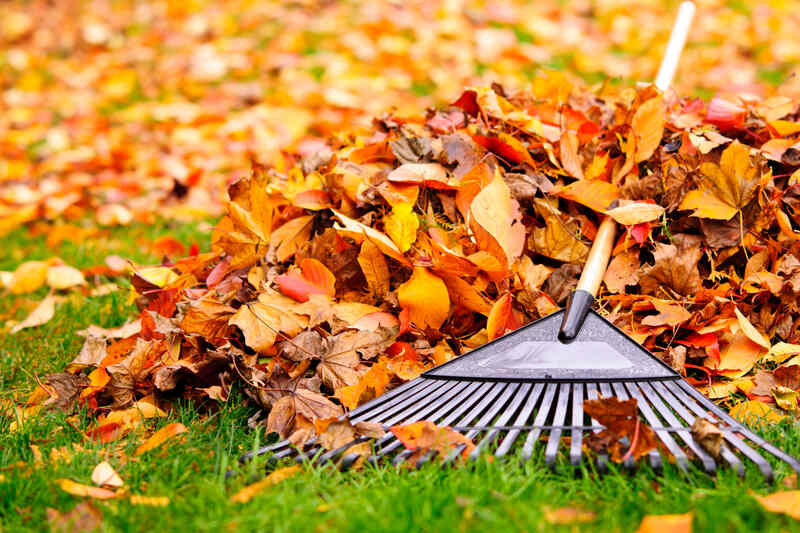
Once the leaves have fallen from the trees, rake them up. Leaves sitting in your yard retain moisture, which increases the chances of your lawn getting leaf spot or melting out.
Looking for a leaf removal service? Find a leaf removal professional near you to clear the leaves and other vegetative debris from your yard.
See Related: How Much Does Leaf Removal Cost?
FAQ About Leaf Spot and Melting Out
Typically, it takes 2 to 6 weeks to get rid of, or at least control, leaf spot and melting out. It takes 2 to 3 rounds of fungicide applications combined with good lawn care practices to effectively treat these lawn diseases. Applications are generally applied every 7 to 14 days.
A regular lawn maintenance schedule is the best way to prevent leaf spot from returning. While you can’t 100% guarantee that your lawn won’t suffer from leaf spot ever again, proper irrigation, soil management, mowing, dethatching, aeration, and planting resistant cultivars are all ways you can help prevent leaf spot from returning.
The average cost for a DIY lawn fungus treatment ranges from $5 to $8 per 1,000 square feet. Pricing varies depending on what type of fungicide you use, whether it is a liquid or granular fungicide, and which brand you use.
When to Hire a Pro
By implementing proper mowing, irrigation, and other lawn care practices, along with fungicides and resistant cultivars, you can get rid of leaf spot and melting out in your yard. But if dealing with lawn diseases sounds like a hassle that you don’t want to deal with yourself, hire a lawn treatment pro to treat your yard for you.
After you get the fungus under control, entrust your regular lawn care to our lawn mowing pros who can take this chore off your weekend to-do list, all at the touch of a button. Download our app on Google Play or the App Store to sign up today.
Read More: Gray Leaf Spot Lawn Disease
Sources:
- “Bipolaris Leaf Spot and Melting Out of Bermudagrass and Other Warm-Season Turfgrasses.” By Stephen Vann, urban plant pathologist. University of Arkansas Extension.
- “Lawn Diseases: Prevention and Management.” By J. Hartin, Extension horticulture advisor in San Bernardino County, P.G. Geisel, Extension advisor emeritus in Fresno County, and M.A. Harivandi, environmental horticulturalist emeritus in Alameda County. University of California.
- “Leaf Spot/Melting Out.” By Richard Latin, professor of plant pathology. Purdue University Extension.
- Phillip Lujan, Extension plant pathologist at New Mexico State University, Las Cruces, NM. Personal interview.
- “Turfgrass Diseases: Leaf Spot and Melting-Out Diseases.” By Peter Landschoot, former professor of turfgrass science. Pennsylvania State University.
- Yonghao Li, plant pathologist at The Connecticut Agricultural Experiment Station, New Haven, CT. Personal interview.
Main Image Credit: William M. Brown Jr., Bugwood.org / Ipm Images / CC BY 3.0 US


